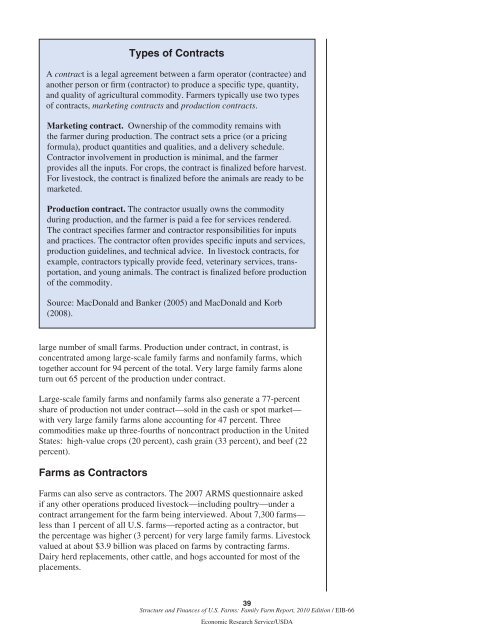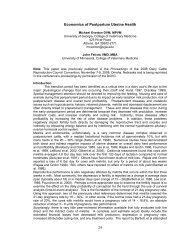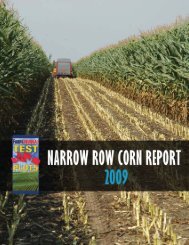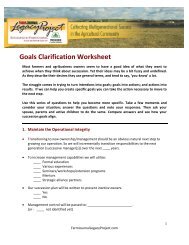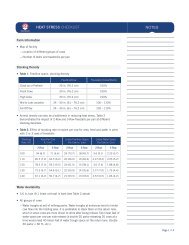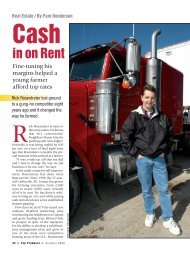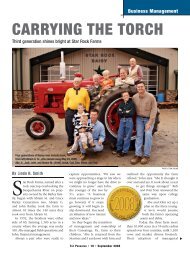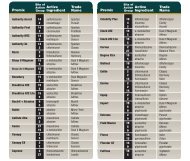Structure and Finances of U.S. Farms: Family Farm Report ... - AgWeb
Structure and Finances of U.S. Farms: Family Farm Report ... - AgWeb
Structure and Finances of U.S. Farms: Family Farm Report ... - AgWeb
You also want an ePaper? Increase the reach of your titles
YUMPU automatically turns print PDFs into web optimized ePapers that Google loves.
Types <strong>of</strong> ContractsA contract is a legal agreement between a farm operator (contractee) <strong>and</strong>another person or firm (contractor) to produce a specific type, quantity,<strong>and</strong> quality <strong>of</strong> agricultural commodity. <strong>Farm</strong>ers typically use two types<strong>of</strong> contracts, marketing contracts <strong>and</strong> production contracts.Marketing contract. Ownership <strong>of</strong> the commodity remains withthe farmer during production. The contract sets a price (or a pricingformula), product quantities <strong>and</strong> qualities, <strong>and</strong> a delivery schedule.Contractor involvement in production is minimal, <strong>and</strong> the farmerprovides all the inputs. For crops, the contract is finalized before harvest.For livestock, the contract is finalized before the animals are ready to bemarketed.Production contract. The contractor usually owns the commodityduring production, <strong>and</strong> the farmer is paid a fee for services rendered.The contract specifies farmer <strong>and</strong> contractor responsibilities for inputs<strong>and</strong> practices. The contractor <strong>of</strong>ten provides specific inputs <strong>and</strong> services,production guidelines, <strong>and</strong> technical advice. In livestock contracts, forexample, contractors typically provide feed, veterinary services, transportation,<strong>and</strong> young animals. The contract is finalized before production<strong>of</strong> the commodity.Source: MacDonald <strong>and</strong> Banker (2005) <strong>and</strong> MacDonald <strong>and</strong> Korb(2008).large number <strong>of</strong> small farms. Production under contract, in contrast, isconcentrated among large-scale family farms <strong>and</strong> nonfamily farms, whichtogether account for 94 percent <strong>of</strong> the total. Very large family farms aloneturn out 65 percent <strong>of</strong> the production under contract.Large-scale family farms <strong>and</strong> nonfamily farms also generate a 77-percentshare <strong>of</strong> production not under contract—sold in the cash or spot market—with very large family farms alone accounting for 47 percent. Threecommodities make up three-fourths <strong>of</strong> noncontract production in the UnitedStates: high-value crops (20 percent), cash grain (33 percent), <strong>and</strong> beef (22percent).<strong><strong>Farm</strong>s</strong> as Contractors<strong><strong>Farm</strong>s</strong> can also serve as contractors. The 2007 ARMS questionnaire askedif any other operations produced livestock—including poultry—under acontract arrangement for the farm being interviewed. About 7,300 farms—less than 1 percent <strong>of</strong> all U.S. farms—reported acting as a contractor, butthe percentage was higher (3 percent) for very large family farms. Livestockvalued at about $3.9 billion was placed on farms by contracting farms.Dairy herd replacements, other cattle, <strong>and</strong> hogs accounted for most <strong>of</strong> theplacements.39<strong>Structure</strong> <strong>and</strong> <strong>Finances</strong> <strong>of</strong> U.S. <strong><strong>Farm</strong>s</strong>: <strong>Family</strong> <strong>Farm</strong> <strong>Report</strong>, 2010 Edition / EIB-66Economic Research Service/USDA


